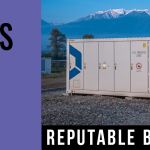 Battery technology is changing. As consumers demand products that are thinner and more powerful, yet also have superior battery performance, researchers and manufacturing are developing new battery technologies, from novel materials to new power management devices. And there’s also the wider consideration of energy storage around alternative and renewable energies such as solar.
Battery technology is changing. As consumers demand products that are thinner and more powerful, yet also have superior battery performance, researchers and manufacturing are developing new battery technologies, from novel materials to new power management devices. And there’s also the wider consideration of energy storage around alternative and renewable energies such as solar.
But what does all of this mean for battery safety? While major headlines will tell you about exploding smartphones and electric cars that catch fire after crashes, the importance of battery safety goes deeper than that.
Ryan Franks, Business Manager, Global Energy Storage, CSA Group works to develop and execute strategies for energy storage. Ahead of his talk at Advanced Design & Manufacturing Cleveland, Franks sat down with Design News to discuss the future of battery testing and inspection and how the global market for batteries is changing.
Right now most investment is going into lithium-ion. Companies are looking to improve on the material in all areas from power efficiency all the way to product design. But does that mean it holds the future? Is lithium-ion the future for batteries and battery safety? What about the alternatives?
Watch the full interview with Ryan Franks below and for more updates be sure to follow Design News on Facebook.
read more
 The Electric Reliability Council of Texas (ERCOT) has predicted peak demand this summer will break previous records due in part by a booming economy.
The Electric Reliability Council of Texas (ERCOT) has predicted peak demand this summer will break previous records due in part by a booming economy. San Diego Gas & Electric (SDG&E), one of California’s three main investor-owned utilities (IOUs), said this week that it will add resilience and backup capabilities to public sector buildings through the procurement of “up to 166MW” of energy storage.
San Diego Gas & Electric (SDG&E), one of California’s three main investor-owned utilities (IOUs), said this week that it will add resilience and backup capabilities to public sector buildings through the procurement of “up to 166MW” of energy storage. SAN DIEGO, Feb. 28, 2018 /PRNewswire/ — Today, San Diego Gas & Electric (SDG&E) took another step toward preparing the region for the next major emergency. The company announced plans to add up to 166 megawatts (MW) of energy storage in a proposal submitted to the California Public Utilities Commission (CPUC). If approved, the projects would support public-sector facilities that provide safety, security and emergency services during power grid outages.
SAN DIEGO, Feb. 28, 2018 /PRNewswire/ — Today, San Diego Gas & Electric (SDG&E) took another step toward preparing the region for the next major emergency. The company announced plans to add up to 166 megawatts (MW) of energy storage in a proposal submitted to the California Public Utilities Commission (CPUC). If approved, the projects would support public-sector facilities that provide safety, security and emergency services during power grid outages. Scientists at the University of California, Irvine; the California Institute of Technology; and the Carnegie Institution for Science have released an analysis of the U.S. electricity grid managing expanding volumes of intermittent generation in the research journal Energy & Environmental Science.
Scientists at the University of California, Irvine; the California Institute of Technology; and the Carnegie Institution for Science have released an analysis of the U.S. electricity grid managing expanding volumes of intermittent generation in the research journal Energy & Environmental Science. SunPower followed up last week’s
SunPower followed up last week’s  At the tail end of installing 15 solar plus storage microgrids across Puerto Rico — all of the work charitable — Sonnen and Pura Energia are providing humanitarian relief and a hint of the energy model the island could become.
At the tail end of installing 15 solar plus storage microgrids across Puerto Rico — all of the work charitable — Sonnen and Pura Energia are providing humanitarian relief and a hint of the energy model the island could become. Wind turbines are strong, durable machines, but they are susceptible to damage by the wind they manage to harness into energy.
Wind turbines are strong, durable machines, but they are susceptible to damage by the wind they manage to harness into energy. Redstone Arsenal Senior Commander Lt. Gen. Ed Daly hosted Army energy leaders at a ribbon cutting ceremony Friday, unveiling a premier solar energy complex in the southeastern section of the installation that will save about $80,000 a year in utility costs.
Redstone Arsenal Senior Commander Lt. Gen. Ed Daly hosted Army energy leaders at a ribbon cutting ceremony Friday, unveiling a premier solar energy complex in the southeastern section of the installation that will save about $80,000 a year in utility costs.



